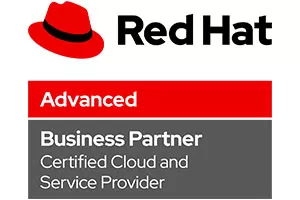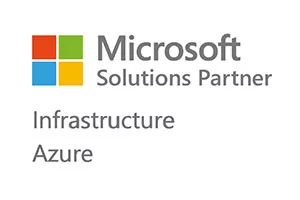
containerisation and microservices
Get boxed in for all the right reasons.
Before we talk containerisation, let’s talk about where your business is heading and how we’ll get you there.
Containerisation, explained.
Companies in the digital economy must be quick to adapt to new market conditions. More than ever, businesses need to give customers innovative, engaging experiences – and today customer experience is driven by applications. In turn, this means that applications must be built in a new way.
Traditionally, an application was built as a single – often huge – code base. These monolithic applications have tight coupling between components making changes difficult and slow. Every time a change is made, the entire application has to be redeployed. This kind of architecture can’t support the flexibility needed today.
Microservices architectures break an application into independent, loosely-coupled, individually deployable services. Developers can scale or update any component without disrupting other services in the application. This enables the rapid delivery of frequent application changes. A microservices architecture replaces a single massive complex application with a collection of small, focused components that work together to provide end users with up to date functionality.
What’s the Challenge Containerisation Addresses?
Among the many benefits of using microservices (flexibility from independent deployments, clear ownership and better separation of functional areas), one issue needs to be addressed – replacing a monolith can result in a huge number of microservices. (When Uber decided to re-architect its core application, the company developed over 2,200 microservices.) The sheer volume presents new challenges – instead of managing one big application, they have to look after many “mini-apps” that may be running on many different platforms.
Containers are the most efficient way of running microservices. Compared to a virtual machine, containers share the operating system of the physical server instead of having a full copy of it. This makes containers a lightweight and standard way for applications to move between environments and run independently – and they can run in the cloud or on-premises.
The IT operations challenges remains. A successful application depends on hundreds or even thousands of containers working together efficiently:
- If there’s a spike in demand, more containers must be started to handle the load.
- When demand is slow, un-needed containers should be stopped – you don’t want to pay for cloud resources for unnecessary containers.
- If a container fails, a replacement needs to be started.
This can’t be done manually – not quickly enough and certainly not at scale.
Orchestration is the process of managing containers and while the image of a conductor coordinating a group of musicians is fair, the container world is much more complicated than that. It’s been said that managing containers is more like “herding cats”!
Inside Containerisation
Just as Docker has become the face of packaging containers, Kubernetes plays the same role for container orchestration. Since it was in 2015, Kubernetes-based platforms have been released by many companies including Red Hat, Amazon, Microsoft, Oracle, and VMware.
Kubernetes is an open-source and free container orchestration system for automating deployment, scaling, and management of containerised applications. As an open-source project, Kubernetes requires a community self-support model – companies either have to do all the work themselves – or pay a third party. While downloading the upstream Kubernetes package isn’t difficult, getting Kubernetes ready for production to run business critical applications for an enterprise takes a lot more.
“One can see why enterprises are rapidly adopting containerization as a superior approach to application development and management.”
– IBM Cloud Education series.
Efficient Workloads with Red Hat OpenShift.
Red Hat OpenShift is an enterprise-grade suite of container orchestration platforms that include Kubernetes together with additional productivity and security features that are important to large-scale companies, plus vendor support, lifecycle updates and upgrades. When a company uses Red Hat OpenShift, instead of having to build and integrate a collection of independent products, it can invest more time and effort in building business applications.
Red Hat OpenShift delivers a complete application platform for both traditional and cloud-native applications, allowing them to run anywhere. Built on Red Hat Enterprise Linux and compatible with Red Hat Ansible Automation Platform, Red Hat OpenShift enables automation inside and outside your Kubernetes clusters. Red Hat OpenShift’s full-stack automated operations and self-service provisioning for developers lets teams work together more efficiently to move ideas from development to production.
Looking for container-native storage?
Container-native design patterns and deployment methods are rapidly becoming an effective standard for agile, continuous IT service delivery in the enterprise. However, adoption of cloud-native, containerised applications at scale has been hindered by the complexities and limitations associated with legacy storage and data management
solutions.
CSI is working closely with IBM to help our clients get access to the data they need without the complexities of traditional silo-based data architectures and delivering the qualities of service, security, and resiliency required.
If you need an integrated data orchestration service platform designed to meet the demanding structured and unstructured storage needs of today’s DevOps containerised environments, then look no further than IBM Storage Fusion.
Introducing IBM Storage Fusion.
IBM Storage Fusion enables your teams to optimise data operations, deliver data on demand from any source to the application architecture efficiently and promote strong security and resiliency of your data estate.
As a Red Hat OpenShift based solution, it includes all of the elements necessary for a production-ready environment that could be in place within 30 days.
IBM Storage Fusion is available in Software Defined, Hyper Converged, and IBM Power Platform options that best deliver the promises of flexibility and portability.
Additionally, all the other elements, such as backup and recovery, high availability, security, orchestration, and much more, operate the same in every location you are running production workloads, plus it can all be managed from a single console.
Browse Our Enterprise Modernisation Services
We’re here to Help.
If you’re unsure about your applications and how you can run faster, more agile microservices in the cloud, we can help. Speak with one of our experts today to find out how unlock more with containerisation services designed to modernise your application landscape.
"*" indicates required fields



